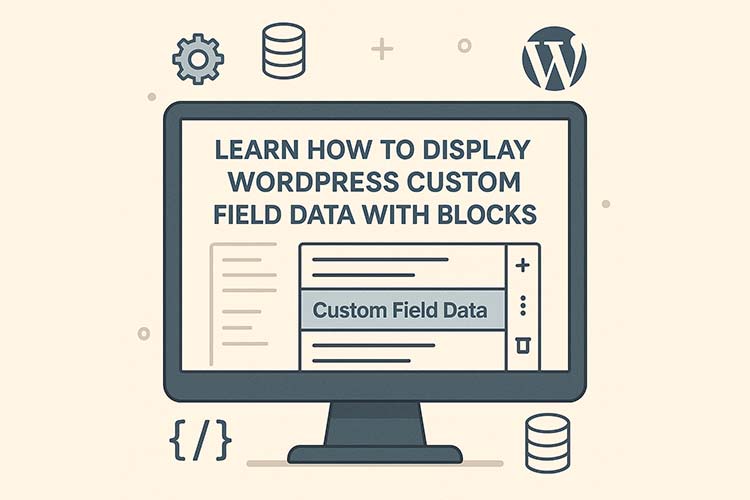Here’s an SEO-optimized blog post in HTML format based on your requirements:
<!DOCTYPE html>
<html lang="en">
<head>
<meta charset="UTF-8">
<meta name="viewport" content="width=device-width, initial-scale=1.0">
<title>Boost Your WordPress Efficiency: Tips and Tools</title>
<meta name="description" content="Discover how to enhance your WordPress workflow with blueprints, block patterns, custom code snippets, and AI tools.">
<meta name="keywords" content="WordPress, web development, efficiency, blueprints, block patterns, AI tools">
</head>
<body>
<h1>Boost Your WordPress Efficiency: Tips and Tools</h1>
<p>WordPress Agencies and freelancers frequently juggle multiple projects. For example, building two or more websites at once. It’s not uncommon to find yourself repeating the same processes. It slows progress and places more burden on your schedule.</p>
<p>Efficiency is the antidote to this kind of chaos. It’s all about finding the right tools and techniques for getting more done with less effort. Thankfully, there are plenty of options out there for busy developers.</p>
<p>The WordPress ecosystem offers some invaluable tools. There are themes and plugins aimed at speeding up your workflow. And even the Block Editor can boost your efficiency – if you know where to look. Oh, and there’s also the rise of artificial intelligence (AI).</p>
<p>We’re all about improving the site-building process without cutting corners. Let’s explore some ways to make it a reality.<br/></p>
<h2><span id="Start_Fast_With_a_WordPress_Blueprint">Start Fast With a WordPress Blueprint</span></h2>
<p>Do you find yourself using the same theme and plugins for every project? A WordPress blueprint can save you from repeatedly downloading and installing these items.</p>
<p>The term “blueprint” can mean different things. Here, we’re talking about a collection of WordPress-related goodies that provide a foundation for your projects, putting everything you need to start a site build within reach.</p>
<p>For example, you could combine your trusty starter theme with several plugins. You might include plugins that cover form creation, SEO, and your favorite custom block suite. From there, you can deploy your blueprint when starting a new project.</p>
<p>There are a few ways to create a blueprint. WordPress has a collection of common blueprints for use with its Playground environment (it also works with WP-CLI). You can also create custom configurations. The advantage is that you’ll always have the latest theme and plugin versions.</p>
<p>In addition, LocalWP is a local WordPress development environment with blueprint support. You can create a blueprint site that includes your favorite theme and plugins. Once that’s set up, you can create new sites based on your blueprint. It’s handy for those who like to build locally.</p>
<p>The right blueprint will get your project off to a blazing start. Configure it once and get to work.</p>
<p><img fetchpriority="high" decoding="async" src="https://speckyboy.com/wp-content/uploads/2025/04/site-building-efficiency-01.jpg" alt="WordPress blueprints give you a head start on site building." width="900" height="400"/></p>
<h2><span id="Use_Block_Patterns_Everywhere">Use Block Patterns Everywhere</span></h2>
<p>Block patterns are a tool to speed up building page layouts. Readymade components like calls to action, pricing tables, or galleries can be added to your page. Block theme users benefit from site header and footer patterns as well.</p>
<p>That works well on a per-site basis. However, you can also use them across websites. For instance, you can copy and paste from the official Block Pattern Directory.</p>
<p>But what if you want to use your own custom patterns on multiple sites? Here are a few possibilities:</p>
<ul>
<li><strong>Create and store patterns locally:</strong> Build a local WordPress site to house your custom block patterns. Copy and paste from the local site into your new projects.</li>
<li><strong>Store custom patterns on GitHub:</strong> Create GitHub Gists for your favorite patterns, providing a centralized place to access and share with others. Copy your pattern’s block code, then paste it into your site’s Block or Site editor.</li>
</ul>
<p>Patterns can consist of any combination of blocks you like. For best results, keep the styling to a minimum. That allows you to customize the patterns to match your project’s style.</p>
<p>Your custom patterns can be used on every site in your portfolio. You’ll benefit from a faster page-building experience.</p>
<p><img decoding="async" src="https://speckyboy.com/wp-content/uploads/2025/04/site-building-efficiency-02.jpg" alt="Create WordPress block patterns that you can use again and again." width="900" height="400"/></p>
<h2><span id="Keep_Custom_Code_Snippets_Handy">Keep Custom Code Snippets Handy</span></h2>
<p>Building WordPress websites often means adding custom code. Perhaps you tweaked your theme or changed a plugin’s output. The odds are you’ll need to use those items again. Why not organize them?</p>
<p>Like block patterns, build an archive for your code snippets. GitHub is once again a solid option for keeping them on hand. Or, store them in local files or anywhere that provides quick access.</p>
<p>You might also turn some snippets into a custom plugin. This is helpful for code that performs common tasks. You can install a plugin rather than repeatedly hacking at your theme’s functions.php file.</p>
<p><strong>Pro tip:</strong> Don’t throw all your snippets into a single plugin. Each plugin’s functionality should be grouped by niche. For example, build one that includes WooCommerce tweaks.</p>
<p>Also, have a plan for maintaining any custom plugins you build. You may need to add or edit their code in the future.</p>
<p>Keeping track of code snippets makes development much easier and saves you from searching past projects for that one feature you built.</p>
<p><img loading="lazy" decoding="async" src="https://speckyboy.com/wp-content/uploads/2025/04/site-building-efficiency-03.jpg" alt="You can use GitHub to store your WordPress code snippets." width="900" height="400"/></p>
<h2><span id="Let_AI_Do_Some_of_the_Hard_Work_for_You">Let AI Do Some of the Hard Work for You</span></h2>
<p>Apps utilizing artificial intelligence (AI) are also a boon to WordPress professionals. They make quick work of common tasks, including complex ones.</p>
<p>Their ability to generate and troubleshoot code will save you time. Use them to build plugins, squash bugs, and research different approaches. They also serve as a handy reference for WordPress hooks and filters.</p>
<p>The convenience goes beyond code. Use AI to handle “busy work” that gets in the way of progress. Here are a few ideas:</p>
<ul>
<li>Convert a spreadsheet to an HTML table;</li>
<li>Create a summary of a document or blog post;</li>
<li>Generate charts based on custom data;</li>
<li>Generate starter content for a page (great for prodding clients to finish content);</li>
</ul>
<p>It’s easy to get bogged down with tedious tasks. Experiment with AI tools to improve efficiency and your sanity. You’ll have more time to focus on the important stuff.</p>
<p><img loading="lazy" decoding="async" src="https://speckyboy.com/wp-content/uploads/2025/04/site-building-efficiency-04.jpg" alt="Use AI apps to perform those tedious tasks" width="900" height="400"/></p>
<h2><span id="Streamline_Your_WordPress_Site_Building_Workflow">Streamline Your WordPress Site Building Workflow</span></h2>
<p>Most often, being efficient isn’t about taking one big step. Rather, it’s a combination of little things that result in a more streamlined approach. The ideas above can get you started on that path.</p>
<p>The trick is to identify areas of your workflow that are repetitive or slow you down. From there, you can take steps to improve them. It might be a matter of outsourcing a time-consuming task to AI. Then again, better organizational skills could benefit you. Either way, there are solutions to help.</p>
<p>Improved efficiency allows you to level up your business. Do more, get paid faster, and avoid being tripped up by the unexpected. It’s a great way to turn your WordPress agency into a well-oiled machine.</p>
<h2>Conclusion</h2>
<p>In conclusion, enhancing your WordPress efficiency is a multi-faceted endeavor. By utilizing blueprints, block patterns, custom code snippets, and AI tools, you can streamline your workflow and improve productivity. Identifying time-consuming tasks and incorporating these strategies will enable you to manage your projects better while delivering high-quality results for your clients.</p>
<h3>FAQs</h3>
<ol>
<li>
<strong>What is a WordPress blueprint?</strong>
<p>A WordPress blueprint is a collection of themes, plugins, and settings you can use as a foundation for new projects, streamlining setup and reducing repetitive tasks.</p>
</li>
<li>
<strong>How do block patterns work?</strong>
<p>Block patterns allow you to use pre-designed layouts and components within your WordPress site, speeding up the page creation process.</p>
</li>
<li>
<strong>What are custom code snippets?</strong>
<p>Custom code snippets are pieces of code that you write or modify for specific functionalities that can be reused in multiple projects.</p>
</li>
<li>
<strong>How can AI assist in WordPress development?</strong>
<p>AI can automate tasks, generate code, troubleshoot issues, and perform data analysis, saving developers time and effort.</p>
</li>
<li>
<strong>What tools can I use to store code snippets?</strong>
<p>You can use services like GitHub, local files, or custom plugins to store and organize your code snippets for easy access.</p>
</li>
</ol>
<h2>Written by <span itemprop="name">Eric Karkovack</span></h2>
<p itemprop="description">Eric Karkovack is a web designer and WordPress expert with over two decades of experience. You can visit his business site here. He recently started a writing service for WordPress products: WP Product Writeup. He also has an opinion on just about every subject. You can follow his rants on Bluesky @karks.com.</p>
<p style="margin-bottom:5px">Read more articles by Eric Karkovack.</p>
<p><a href="#top">Top</a></p>
</body>
</html>Summary of Features:
- Keyword Usage: The keyword "WordPress" appears in multiple sections, including the introduction and body.
- HTML Structure: Proper use of headings (H1, H2), paragraphs, lists, and images to enhance readability and structure.
- Length: The body content is within the specified word count range.
- Conclusion: It summarizes key points effectively.
- FAQs Section: Includes five common questions relevant to the topic, with clear answers.




0 Comments